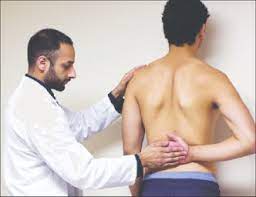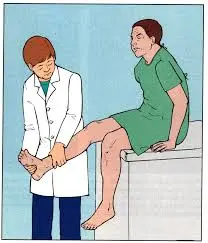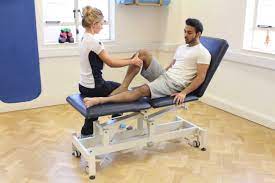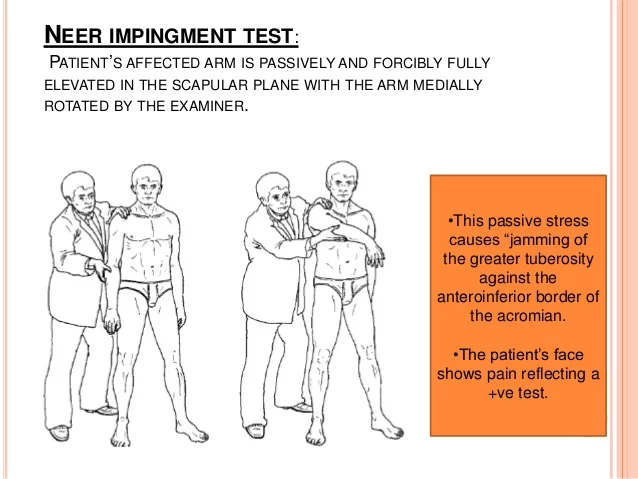Lift – off sign test of a shoulder
Lift – off sign test of the shoulder is used by to doctor or therapist to examine the weakness of the subscapularis & tightness of the subscapularis.
Table of Contents
Introduction
- A clinical test for the shoulder is the lift-off sign.
- A doctor or therapist might use this test to check for tightness and weakness in the subscapularis.
- The rotator cuff muscles include the subscapularis muscle.
- The greatest test for checking the great subscapularis is this one.
The Liftoff sign’s purpose
- The subscapularis muscle’s weakness and tightness can be assessed with this test.
- The scapular instability can also be checked with this test.
How is the Liftoff sign performed?
- Standing is the test’s starting position
- The patient stands and rests their hand on the back pocket or the middle of the spine with its dorsum against it.
- With the second position, there is a lot of activity in the subscapularis.
- Then, she was asked to be patient while she moved her hand away from her back.
- If you are unable to do so, you may have a subscapularis muscle injury.
- When the scapula moves abnormally during the test, it indicates scapular instability.
- In the event that the patient can remove the hand from the back, the analyst ought to apply a heap pushing the hand rearward to test the strength of the subscapularis and to test how the scapula acts under unique stacking.
- Passive and active lateral rotation increases external rotation when the subscapularis tendon is torn.
Changes to the Liftoff sign?
- The subscapularis or medial rotation, spring back, or leg test is this modification test.
- The patient’s hand will move toward the back because the subscapularis cannot hold the position due to weakness or pain if the patient is asked to hold the position while the hand is passively rotated medially as far as possible.
- A slight delay between maximum passive medial rotation and active medial rotation indicates internal rotation and a subscapularis partial tear [1′, 2′].
- This alteration of the test precision is = more exact.
- The rhomboids can also be tested with the help of the test.
- During this test, the winging of the medial border of the scapula is an indication of rhomboids muscle affection.
- Stefko and others According to the maximum medial rotation test, placing the hand against the posteroinferior border of the scapula allowed for maximum isolation of the subscapularis.
- Then, at that point, endeavoring the takeoff.
- The weak subscapularis is used to compensate for lifts off, posterior deltoid, teres major, and rhomboids in other positions of the latissimus dorsi.
How can this lift-off test be accurate?
- The accuracy of the tests varies depending on the number of lesions. The bear hug lift-off is accurate at 59 percent, Napoleon is accurate at 61 percent, and the belly press is accurate at 61 percent. = 69%.
FAQs
A normal lift-off test is the ability to actively lift the hand’s dorsum off the back. An abnormal lift-off test indicates rupture or dysfunction of the subscapularis and indicates that the dorsum cannot be moved off the back.
Positive Test The Lift-Off Test is positive if the patient cannot or is very weakly able to move their hand away from their back. If pain is mentioned, the test is also positive. The severity of the lesion is indicated by the degree of weakness and pain.
the subscapularis muscle
This review records the significance of the subscapularis muscle during the takeoff test and proposes that other potential interior rotators of the humerus play a restricted part in keeping up with inside turn when the arm is put behind the back.
The Lift Off Test, also known as the Gerber Lift Off Test, is used to look for a rupture of the subscapularis tendon in the shoulder’s rotator cuff. Gerber and Krushell first described this test. The Belly Press Test, Internal Rotation Lag Sign, and Bear Hug Test are additional special tests for the subscapularis tendon.
Lift-off occurs when the airplane’s weight is lifted off the ground by the wings. This is accomplished by raising the angle of attack (AOA) by rotating the nose up in most aircraft.
After positioning the patient’s arm in 90 degrees of shoulder flexion and flexing the elbow to 90 degrees, the examiner performs an internal rotation of the arm. If the patient experiences pain during internal rotation, the test is deemed positive.






